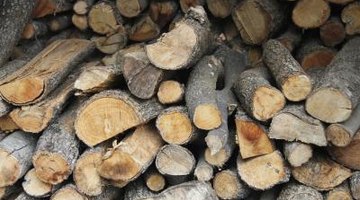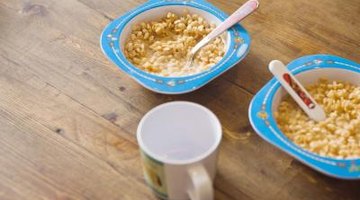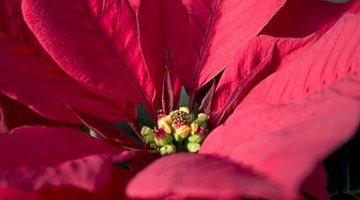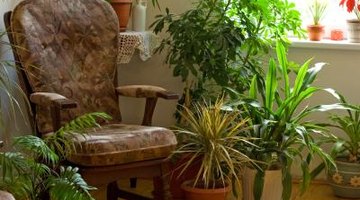Tiny Bugs Infesting a House
Table of Contents
Tiny bugs that infest your home fall into different categories. Small beetles, mites and psocids infest various foods. Whiteflies, thrips and gnats infest plants, and some tiny bugs, like the springtail, are drawn to moisture. Closely observing what the bugs are doing will help you to identify them.

Springtails

Springtails, or snow fleas, are tiny, primitive insects only 1/25 to 1/5 inch long. In spite of their small size, they can jump about 100 times their body length in just one move, thanks to a hinged appendage they have on their abdomen. Springtails normally live outdoors in mulch, firewood or other decaying organic matter. When their normal homes become dry, they invade houses, looking for moisture. They’re drawn to light, and can enter houses through cracks and crevices around doors, pipes and window screens. Once inside, they gravitate to areas like bathrooms, crawlspaces, kitchens and basements. Springtails are grayish, wingless insects with limited vision. They don’t bite or feed on household items, and are only a nuisance for a short time since springtails trapped indoors soon die.
Beetles

Several small beetles, including the red flour beetle, the saw-toothed grain beetle and the confused flour beetle infest stored cereal grain products. Red flour beetles are slender, flat beetles that grow 1/10 inch long. They’re dark red or brown in color and, in addition to eating grains, feed on dried meats, fruits, candy, seeds and nuts. Confused flour beetles are almost impossible to distinguish from red flour beetles without an expert’s help. Hundreds of them can live in a single small box of food. Cigarette beetles are about 1/10 inch long and have a silky, yellowish brown color, due to the small hairs that cover their body. This beetle’s head is tucked down beneath the front part of the body and can’t be seen from above. Cigarette beetles feed on grains and cereal products, dried fruits and various spices.
Psocids/Grain Mites

Psocids also are known as book lice, and these wingless insects resemble lice in their appearance. They’re pale gray or yellowish white, soft-bodied insects about the size of a pinhead. Grain mites also are pale gray and wingless soft-bodied creatures. They can be found in stored grain and multiply quickly in moist conditions, making the food they infest look alive with mites.
Whiteflies

Whiteflies infest houseplants like poinsettia, ivy, hibiscus and lantana. They look something like small gnats and they’re covered with a fine white wax. Whiteflies damage houseplants by sucking their sap and excreting honeydew on the leaves. The honeydew interferes with a plant’s ability to do photosynthesis and attracts various fungi infections.
Thrips/Gnats

Thrips are tiny flying insects less than 1/16 inch long. They have long bodies that may be brown or pale in color. Thrips cause irregular silvery areas to appear on leaf surfaces where they feed. Fungus gnats don’t injure plants, but they are a nuisance. They’re small, dark-colored flies that jump and fly, and they’re more likely to be around during the winter and early spring.
The Drip Cap
- Tiny bugs that infest your home fall into different categories.
- Small beetles, mites and psocids infest various foods.
- Closely observing what the bugs are doing will help you to identify them.
- Springtails, or snow fleas, are tiny, primitive insects only 1/25 to 1/5 inch long.
- They don’t bite or feed on household items, and are only a nuisance for a short time since springtails trapped indoors soon die.
- Grain mites also are pale gray and wingless soft-bodied creatures.
- They’re small, dark-colored flies that jump and fly, and They’re more likely to be around during the winter and early spring.
References
Resources
Writer Bio
Lani Thompson began writing in 1987 as a journalist for the "Pequawket Valley News." In 1993 she became managing editor of the "Independent Observer" in East Stoneham, Maine. Thompson also developed and produced the "Clan Thompson Celiac Pocketguides" for people with celiac disease. She attended the University of New Hampshire.
Photo Credits
- Henrik_L/iStock/Getty Images
- Henrik_L/iStock/Getty Images
- studioportosabbia/iStock/Getty Images
- Sergio Schnitzler/iStock/Getty Images
- Jupiterimages/BananaStock/Getty Images
- Bojidar Beremski/iStock/Getty Images
- Arpad Nagy-Bagoly/iStock/Getty Images
More Articles



